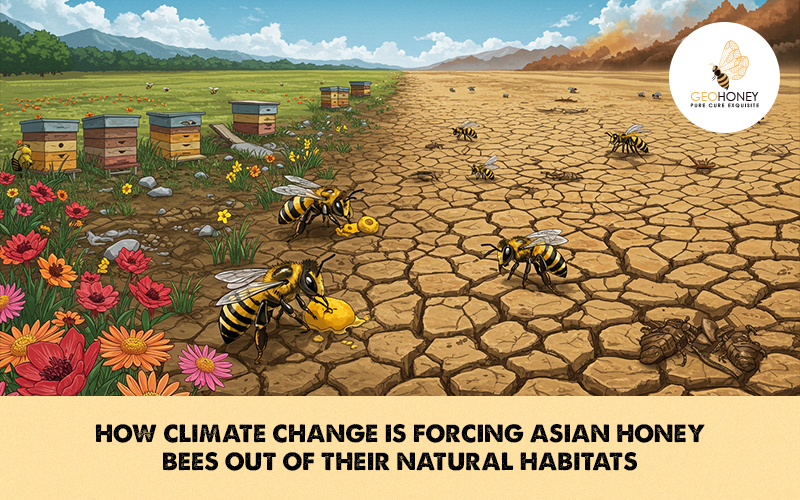- Tokyo: 13:24
- Singapore: 12:24
- Dubai: 08:24
- London: 04:24
- New York: 23:24
How Climate Change Is Forcing Asian Honey Bees Out of Their Natural Habitats

Asia's native honey bees—Apis cerana, A. dorsata, and A. florea—are confronting a formidable challenge: climate change is reshaping their habitats. A recent paper in the Journal of Wildlife & Biodiversity (June 2025) reveals that by 2050, average annual temperatures across their range are projected to rise by 2.3–2.5 °C, with 50–60 mm more precipitation. These changes are expected to alter foraging periods and impose intense summer heat stress (Wildlife Biodiversity,ResearchGate).
Key Findings
Apis florea may face an average temperature rise of +2.5 °C; A. cerana +2.4 °C; A. dorsata +2.3 °C.
Increased rainfall could extend foraging in spring/winter, but hotter summers may threaten survival (Wildlife Biodiversity).
Habitat suitability models (using MaxEnt and WorldClim data) show significant contraction in current ranges, especially in Pakistan. Many regions may become inhospitable during peak summer months.
Broader consequences
Rising temperatures may force bees upslope or poleward, disrupting existing ecosystems.
Colony resilience could decline under thermal and moisture stresses.
Crops and wild flora dependent on these bees may lose critical pollination services.
Conservation & action steps
Landscape management: preserve corridors between cooler regions, forests, and shaded refuges.
Climate-informed apiary siting: prioritize elevations and microclimates that buffer extreme temperatures.
Assisted migration and breeding programs: propagate heat- and humidity-resilient subspecies.
Conclusion
Climate change isn't just a distant threat—it’s actively reshuffling bee habitats now. Our native Asian honey bees are at the forefront of this ecological upheaval. We cannot stand by while warming temperatures uproot pollination networks essential to agriculture and biodiversity.





